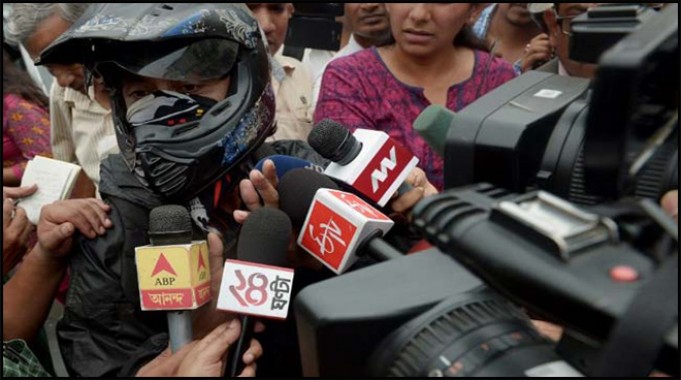This is No Way to Cover a Murder Story
Let’s pause to consider this amazing phrase in a news story: ‘While Indrani has stood firm
and not yet admitted to her role in the crime…’
— Tweet by Ellen Barry, NewYork Times South Asia Bureau Chief
Even though the police has barely begun to establish the facts behind the disappearance of Sheena Bora, hard evidence is scant and there is no clear motive for her apparent murder in sight, there’s been an amazing amount of moralising. Much of it is based on crude judgments, extrapolated at speed from what is essentially raw footage — contradictory, confusing, unsifted testimonies extracted by the media from some of the main protagonists, as well as mostly unnamed relatives, neighbours and family friends.
Words like deviant, debauched and dysfunctional, uttered with saintly facial expressions and tones of deep relish, dominate studio patter. Trite comparisons are being aired every day between “good mothers” and “bad mothers”, with a former society columnist even congratulating herself on live TV the other day for being a better mother than prime suspect Indrani Mukerjea. Another mother who denied having a daughter in a property case she eventually lost is a daily fixture in this studio morality play. Much of this chit-chatting crowd has, of course, already convicted Mukerjea for killing her daughter, Sheena — this before she has even been formally charge-sheeted.
Journalism of easy virtue
Forget the studio patterers for a moment; or lurid India TV, with its comic book sketches of a grimacing Mukerjea and her leering ex-husband Sanjeev Khanna closing in on Bora; or the 2015 version of “Aap ko kaisa lag raha hai?” — in which a husband gets to be asked by Arnab Goswami if he believes his wife is a murderer. Even the usually reputable sections of the media have been quick to arrive at conclusions underpinned, it appears, by deeply conservative notions of what constitutes womanly virtue. Shyamal Majumdar’s recent column in Business Standard is a virtual primer (for men, clearly) on how to spot, and avoid, the femme fatale, an account that seems to paint every one of Mukerjea’s husbands as her victim. The Hindu, which is normally measured, weighed in, too, with a lofty editorial broadside against “a once-traditional society’s speedy metamorphosis into an acquisitive FMCG economy with its attendant attributes of obsessive ambition and ruthless self-indulgence.” This, of course, is epitomised by the story of small-town girl turned “jetsetting society lady” Indrani Mukerjea. The woman, The Hindu opines — on the strength of what must surely be meagre information about her exact domestic circumstances — “appears to have had no qualms in abandoning her first husband and two young children in her search for the good life”. Her second, Khanna, was “jettisoned quickly”, says the editorial, relying heavily on his version of why the marriage ended. Moreover, Mukerjea’s chronicle and the mores she represents (and you could see this one coming from a mile off) “reject the one value so dear to old India – the sanctity of motherhood”.
Since editorials in The Hindu are not taken as lightly as say Neeta’s Natter, a question to ask perhaps is how coloured might a judge’s view be by this masterly summation of Mukerjea’s character, lifestyle and conduct, when he one day finds himself presiding over her trial?
Not the same as Jessica Lal
Amidst all the hand-wringing over a woman’s, and a society’s morals, relatively few bells have been rung about the media scrum developing around this case. Last week, on NDTV’s show, The Buck Stops Here, Barkha Dutt asked the journalist Anil Dharkar, “Is this all of India lapping up everyone’s private demons or is this a legitimate criminal investigation that journalists must probe?” Revealingly, no one on the panel, not even the anchor, seemed to like Dharkar’s answer: “This is a criminal investigation that has to be probed by the police. It is really not something the media has to do.” Misplaced comparisons were drawn with the Jessica Lal case, and the claim put forward — with only a lone Dharkar protesting — that the media was justified in playing an interventionist role and taking the story forward.
Read the rest here.







